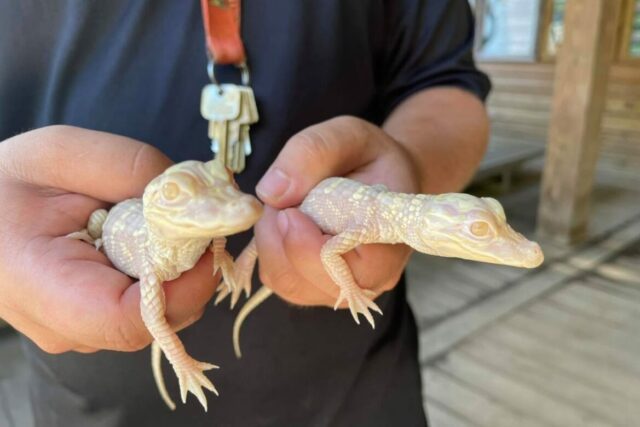Albinism among animals is not as rare as one might think, but for animals with this genetic mutation, surviving in the wild is extremely difficult. They are often rejected by their relatives, attract predators, and suffer from congenital diseases.
Albino Alligators: Surviving in the Wild
For albino alligators, these dangers are particularly great. In addition to the usual threats that await them in the wild, some have distorted jaws, and their light skin is not adapted to life in the environment.
«Albinos are very sensitive to the sun. They don’t know they’re albinos, so they can sit in the sun all day until it kills them,» shared Sam Haught, co-founder of Wild Florida park.
There are less than 200 white alligators in the world who have been able to adapt to such hostile conditions. In zoos, these animals require special care, and they are already under human supervision.
Wild Florida Park and Albino Alligators
One such place is the Wild Florida park. In May 2017, the company purchased a breeding pair of albino alligators named Blizzard and Snowflake. They became the first pair of albino alligators to reproduce in Central Florida. Now it is one of the few places in the world where visitors can see these rare fauna representatives.
A special climate-controlled enclosure with a large number of lamps has been built in the park where the alligators can warm themselves without risking exposure to the sun’s rays. At the time of purchase, the male, Blizzard, was 12 years old, while the female, Snowflake, was 23 years old. Both have light-colored bodies and eyes reminiscent of milk droplets. Snowflake’s right eye is opaque white, while the left eye has two red spots.
The ideal conditions created for them at the park allow the alligators to reproduce without any problems. Although most of their offspring are normal, in 2019, one of the babies inherited their uniqueness from the parents, and this year, two more out of 18 babies turned out to be albino.





